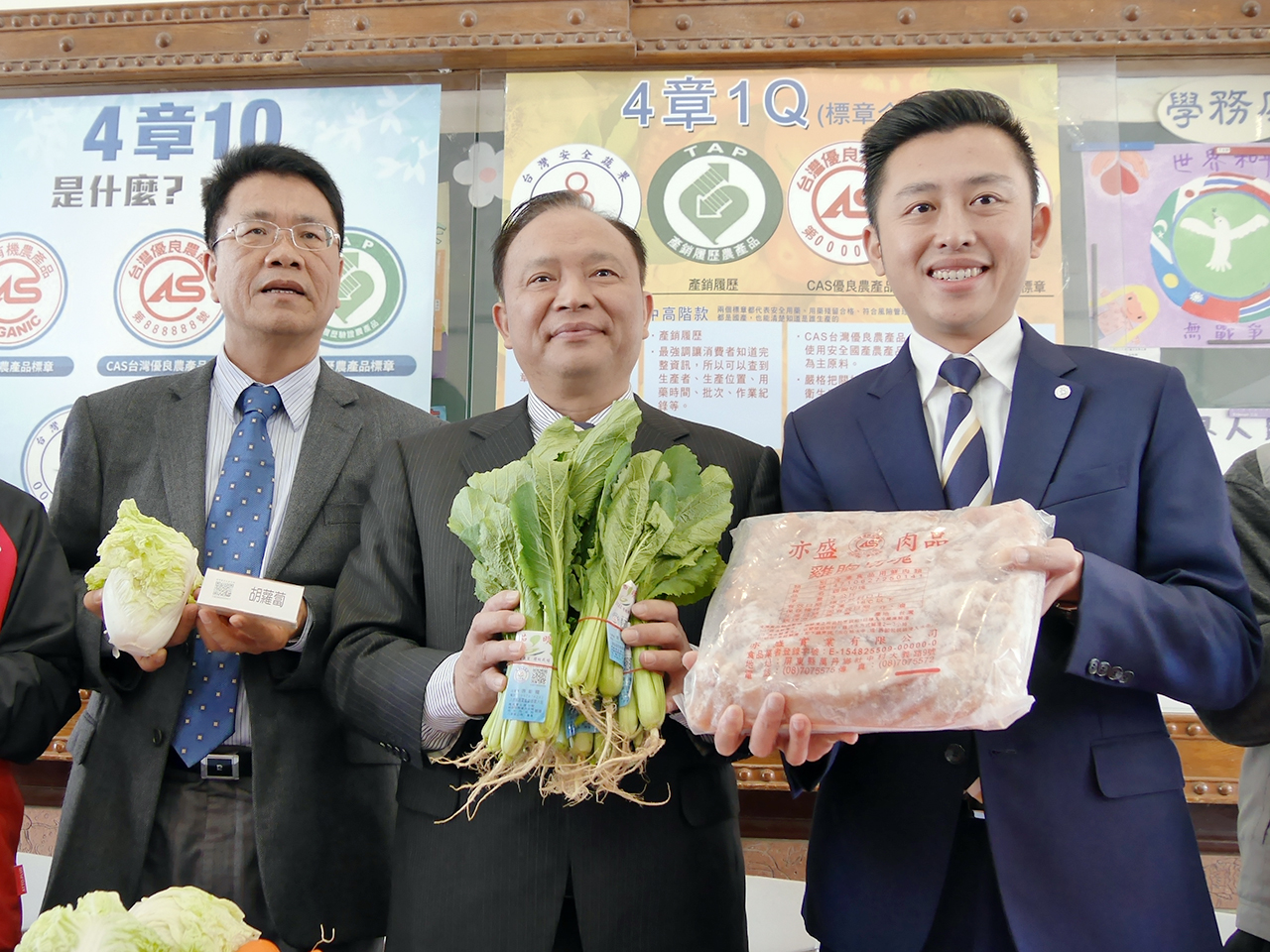Ensuring the Safety of School Lunch with Local and Traceable Ingredients of “Four Labels and One QR Code”
In order to fully achieve the five pillars of food safety, 2017 saw the start of a campaign to promote the use of organic, traceable agricultural product (TAP), those produced in compliance with certified agriculture standard (CAS), good agricultural practice (GAP), or agricultural products with traceability QR codes in school lunch. Six cities and counties, namely, Hsinchu County, Hsinchu City, Taichung City, Tainan City, Taitung County, and Yilan County, are participating in the trial run of the said “4 labels and 1 QR code” program from February, 2017. The Council of Agriculture (COA) Minister Lin Tsung-hsien paid a visit to the San Min Primary School in Hsinchu City to gain a better understanding of the preparatory works and implementation of the policy in schools. He advocated his support for the “4 labels and 1 QR code” program during this visit and enjoyed a hearty lunch with students. He stressed that food safety is an important issue to every citizen, and the government would be proactively working on enrolling schools nationwide in this program, so that students may eat safely and parents may feel at ease.
Schools in 6 cities and counties to make “4 labels and 1 QR code” mandatory when choosing school lunch suppliers
In order to achieve food traceability for schools, the COA has assisted the Ministry of Education in the revision of the School Lunchbox Procurement Contract to prioritize the procurement of “4 labels and 1 QR code” ingredients, thus integrating traceable product information to into the Campus Food Ingredient Registration Platform and encouraging school lunches to use traceable agricultural products produced in Taiwan.
Minister Lin stated that in order to ensure a smooth rollout of the program in 2017, the COA would learn from the problems pinpointed during this trial period and continue to assist the Ministry of Education in revising relevant contract with suppliers. Furthermore, to make sure the ingredient suppliers and catering service providers have enough access to “4 labels and 1 QR code” sources during the trial period, the Council would help the existing ingredients suppliers adopt the Taiwan Agricultural Product Production Traceability System (QR code). As for schools without regular ingredients suppliers, the Council would provide them with a list of “4 labels and 1 QR code” certified producers so as to facilitate the procurement. Additionally, the COA also encouraged wholesale markets to set up designated TAP areas where procurement buyers may purchase or place bulk orders. Farmers groups were also counseled to organize sales platforms to ensure a smooth supply of goods.
Achieving food safety on campus through endeavor at both production and school end
Minister Lin explained that in order to secure safe school lunch ingredients, agricultural authorities have coordinated with educational administrators to conduct joint inspections. Since Sept. 1, 2016, pesticide residues in fresh ingredients for school lunches are randomly checked in municipalities and counties. A total of 1047 cases have been inspected in 2016 with an average passing rate of 87.5% as of September and 91.4% by the end of same year. In 2017, 127 cases have undergone inspection by the end of January with a passing rate of 92.1%. Besides increasing the cases of random inspection at the school end to 3000, the COA also encourages ingredient suppliers at production source to submit up to 10,000 cases autonomously for inspection. Before proceeding with harvest and supply operations, farmers that provide “4 labels and 1QR code” products are required to have their products passed the pre-harvest inspection, which further guarantees the safety of school lunch. In sum, a sound mechanism is in place to safeguard both ends of the supply chain, so that the end-products are of the highest quality and safety.
Minister and mayor join the students for a school lunch and requested a strict control on ingredient supply
Minister Lin paid a field visit to San Min Primary School in Hsinchu City and learned about the status of the preparatory works for the trial run. Together with Mayor Lin Chih-chien, the pair served lunch to students and enjoyed meals with them, so they may gain first-hand understanding about the supply situation of lunch ingredients. He instructed relevant departments of the COA to ensure a sufficient supply of “4 labels and 1 QR code” food ingredients in these counties and assist in their problem-solving. Hopefully, by the next semester, the program can be implemented nationwide.

